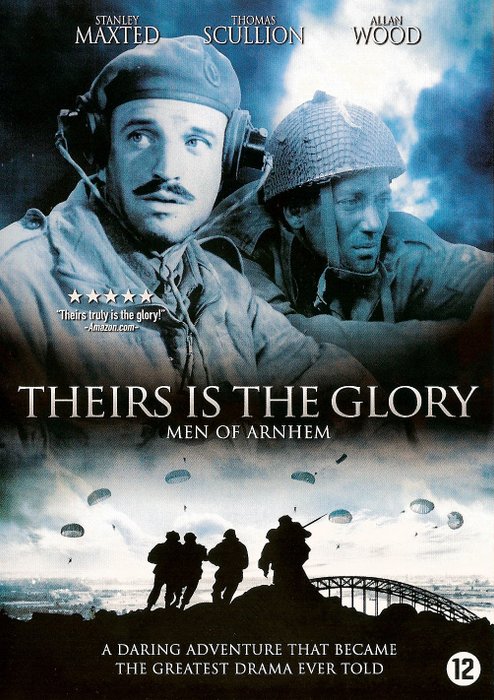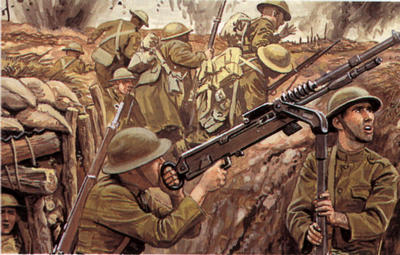“Theirs Is the Glory” is a unique war movie. It reenacts the British participation in
Operation Market Garden. It was
“produced entirely without the use of studio sets or actors. Every incident was either experienced or
witnessed by the people who appear in the film.” Everyone in the 200 person cast was either a
British soldier who participated in Operation Market Garden or a Dutch civilian
who lived through the battle. The
veterans were paid three pounds per diem.
They had a lot of input in the action and dialogue. Director Brian Desmond Hurst (“Malta Story”)
was a veteran of the Gallipoli Campaign of WWI.
He considered the movie to be his finest achievement in a stellar
career. It was a labor of love. The filming began one year after the battle on
the actual sites. The premiere occurred
on the two year anniversary of the battle and was attended by the Prime
Minister. A private showing was provided
for King George VI. The film was a huge
hit in Great Britain and was the top grossing film for a decade.
The movie opens with a view of the destroyed bridge
at Arnhem. A montage of sites familiar
to students of the battle follow. The
Operation Market Garden plan is outlined via a map. Several paratroopers in a barracks are
identified by the narrator. The campaign
begins with an armada of gliders and transports dropping paratroopers. Upon reaching the Arnhem Bridge, a
flamethrower sets off ammunition and a mixed bag of Germans are taken captive,
but the bridge cannot be taken. The unit
at the bridge is cut off from the main body that ends up surrounded at
Oosterbeek. The rest of the movie
consists of the last stands of both these bodies of men.
This is a gem of a movie. It is unique in using the actual participants
in an historical event. Surprisingly,
the “actors” do a commendable job. They
are obviously not professionals, but they are still better than many B movie
actors. Notice how they duck and flinch
at explosions like they have been there before.
They have also seen enough death to know how a soldier dies. No one throws his hands in the air and twirls
around. The dialogue is natural as is to
be expected from men who had input in what they say because they may have said
it. One unfortunate decision was not to
identify the men. Only keen students of
the battle will recognize Majors “Freddie” Gough and “Dickie” Lonsdale, for
instance. Look closely and you will see
Kate ter Horst (the Liv Ullmann character in “A Bridge Too Far”) reading psalms
to the wounded.
 |
| Set up Montgomery's reviewing stand over there |
The movie is an amazing blend of footage and
reenactments. Basically, whenever anyone
speaks it is a reenactment. A narrator
provides the documentary feel and also does a great job informing. The narration is sincere, but not treacly. Maps are used well. A nice touch is the use of an embedded war
correspondent to give eye-witness accounts of what is happening within the
Oosterbeek perimeter.
If the acting is satisfactory, the action is
outstanding. And there is a lot of
it! The bitter aspects of a last stand
against overwhelming odds is reenacted with verve. There is some realistic tank action and
excellent bomb effects. The only false
note has a Brit throwing a grenade to silence a German broadcasting a surrender
demand. It stands out in a movie that is
a sober portrayal of the hell of war.
There are some emotional deaths in the movie and one can assume they
were emotional for the reenactors. The
movie ends by returning to the barracks to inform that most of the paratroopers
did not return.
“Theirs Is the Glory” is as good as it gets when it
comes to telling the story of the British 1st Airborne’s role in
Market Garden. It honors the
participants. It is not a propaganda
puff piece, but it does leave out a few details that would slightly mar the
theme. The movie is mostly free of
reference to the mistakes the campaign is famous for. There are no communications problems in the
film, for instance. There is only brief
mention of Gen. Urquhart being cut off from his men for crucial hours and no
mention about the flaws in the overall plan.
There is no controversy, not surprisingly.
“Theirs Is the Glory” has often been compared
favorably to “A Bridge Too Far” as though one must choose between them. In reality, they are both great movies and when
paired do complete justice to the campaign and the men who participated in
it. “Bridge” gives the big picture and
“Glory”concentrates on just Arnhem and Oosterbeek. I strongly suggest you watch “Bridge” first
and use “Glory” as an addendum. Whatever
order you choose, watch both because they both are among the 100 Best War
Movies.
GRADE = A










